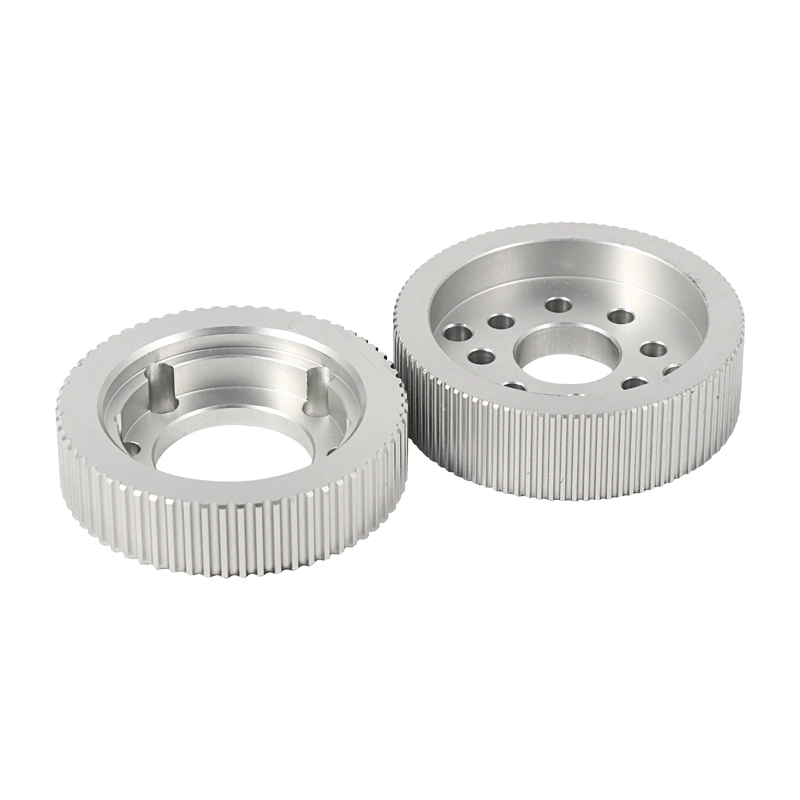HTD Pulley in Wave Power Plants
Introduction to Wave Power Plants
Wave power plants harness the energy generated by ocean waves to produce electricity, offering an innovative and sustainable solution to the global energy crisis. The mechanics of these plants involve several intricate components, among which HTD pulleys play a pivotal role.
The Role of HTD Pulleys in Wave Power Systems
HTD pulleys, characterized by their High Torque Drive capabilities, are integral to the effective operation of wave power systems. They ensure the smooth transmission of energy between different mechanical components, thereby enhancing the overall efficiency of the power plant.
Design and Structure of HTD Pulleys
The design of HTD pulleys includes precision-engineered teeth that mesh seamlessly with belts, preventing slippage and maximizing torque transmission. This unique structure contributes to the reliability and longevity of wave power equipment.
Material Selection for HTD Pulleys
HTD pulleys are typically constructed from high-strength materials such as aluminum, steel, or composite polymers. The choice of material affects the pulley¡¯s durability, weight, and resistance to corrosion, influencing the overall performance of the wave power plant.
Manufacturing Process of HTD Pulleys
The manufacturing process involves several stages including CAD design, CNC machining, heat treatment, and surface finishing. Precision and adherence to stringent quality standards are crucial to ensure the optimal function of the pulleys in demanding marine environments.
Integration of HTD Pulleys in Wave Power Plants
Integrating HTD pulleys into wave power plants requires meticulous planning and alignment with other system components. Engineers must consider factors such as load distribution, rotational speeds, and environmental conditions to achieve seamless integration.
Efficiency Improvements with HTD Pulleys
HTD pulleys significantly improve the efficiency of wave power plants by minimizing energy losses and ensuring consistent power transmission. Their precise engagement with timing belts reduces friction and wear, contributing to longer maintenance intervals.
Maintenance and Longevity of HTD Pulleys
Regular maintenance of HTD pulleys includes inspection for wear and tear, lubrication, and alignment checks. Adhering to a maintenance schedule can extend the lifespan of the pulleys and prevent unexpected downtime in power plant operations.
Challenges in Utilizing HTD Pulleys
Despite their advantages, HTD pulleys face challenges such as exposure to saltwater, which can lead to corrosion. Addressing these issues requires the use of corrosion-resistant materials and protective coatings.
Case Studies of HTD Pulley Applications
Several wave power plants globally have successfully implemented HTD pulleys, showcasing their benefits. Case studies highlight the performance improvements, cost savings, and reliability enhancements achieved through the use of these advanced components.
Environmental Impact of HTD Pulleys
HTD pulleys contribute to the sustainability of wave power plants by facilitating the efficient use of renewable energy. Their role in reducing fossil fuel dependence and minimizing carbon emissions underscores their environmental significance.
Future Innovations in HTD Pulley Technology
Ongoing research and development aim to enhance HTD pulley technology further. Innovations may include new materials, improved manufacturing techniques, and advanced design features that boost performance and durability.
Cost-Benefit Analysis of HTD Pulleys
A comprehensive cost-benefit analysis reveals that while the initial investment in HTD pulleys may be higher, the long-term savings in maintenance and efficiency gains offset these costs. This analysis helps stakeholders make informed decisions.
Comparative Analysis with Other Pulley Types
HTD pulleys are compared with other pulley types such as flat pulleys and V-pulleys. The comparative analysis highlights the superior torque transmission, reliability, and efficiency of HTD pulleys in demanding applications.
Customization Options for HTD Pulleys
Manufacturers offer customization options for HTD pulleys, including variations in size, material, and tooth profile. Customization ensures that the pulleys meet specific requirements of different wave power plants.
Global Market Trends for HTD Pulleys
The global market for HTD pulleys is witnessing a steady growth, driven by the rising demand for renewable energy solutions. Market trends indicate increasing adoption of HTD pulleys in various industrial applications, especially in wave power plants.

Regulatory Standards and Compliance
HTD pulleys used in wave power plants must comply with various regulatory standards that ensure safety and performance. Adherence to these standards is critical for the certification and operation of wave power facilities.
Supplier Considerations for HTD Pulleys
Choosing the right supplier for HTD pulleys involves evaluating factors such as product quality, delivery timelines, and after-sales support. Collaborating with reputable suppliers ensures the reliability and longevity of the pulleys.
Installation Best Practices
Proper installation of HTD pulleys is crucial for their optimal performance. Best practices include correct alignment, tensioning of belts, and ensuring that all components are securely fastened to prevent operational issues.
Training and Skill Development
Training personnel on the installation, maintenance, and troubleshooting of HTD pulleys is vital for the smooth operation of wave power plants. Skill development programs help in building expertise and ensuring efficient plant management.
Impact on Wave Power Plant Economics
The integration of HTD pulleys in wave power plants can significantly impact plant economics by reducing operational costs and increasing energy output. This impact highlights the economic viability of investing in advanced pulley systems.
Environmental Adaptations for Marine Conditions
HTD pulleys used in marine conditions must withstand harsh environmental factors such as saltwater exposure and fluctuating temperatures. Environmental adaptations include the use of specialized materials and coatings to enhance resilience.

Concluding Remarks on HTD Pulleys in Wave Power Plants
HTD pulleys play an indispensable role in the efficient and reliable operation of wave power plants. Their unique design, material strength, and integration capabilities make them a preferred choice for renewable energy applications.
Our Company's Commitment to Quality and Service
Our company is a leading player in the Chinese pulley market, offering a wide range of products including HTD pulleys, plastic pulleys, timing pulleys, belt idler pulleys, belt pulleys, v pulleys, compound pulleys, and heavy-duty pulleys. With over 300 sets of fully automated CNC production equipment and fully automated assembly equipment, we are committed to providing high-quality products, competitive pricing, and exceptional service. We welcome customers to customize pulleys according to their drawings or samples. Partner with us to experience superior pulley solutions tailored to your needs.
